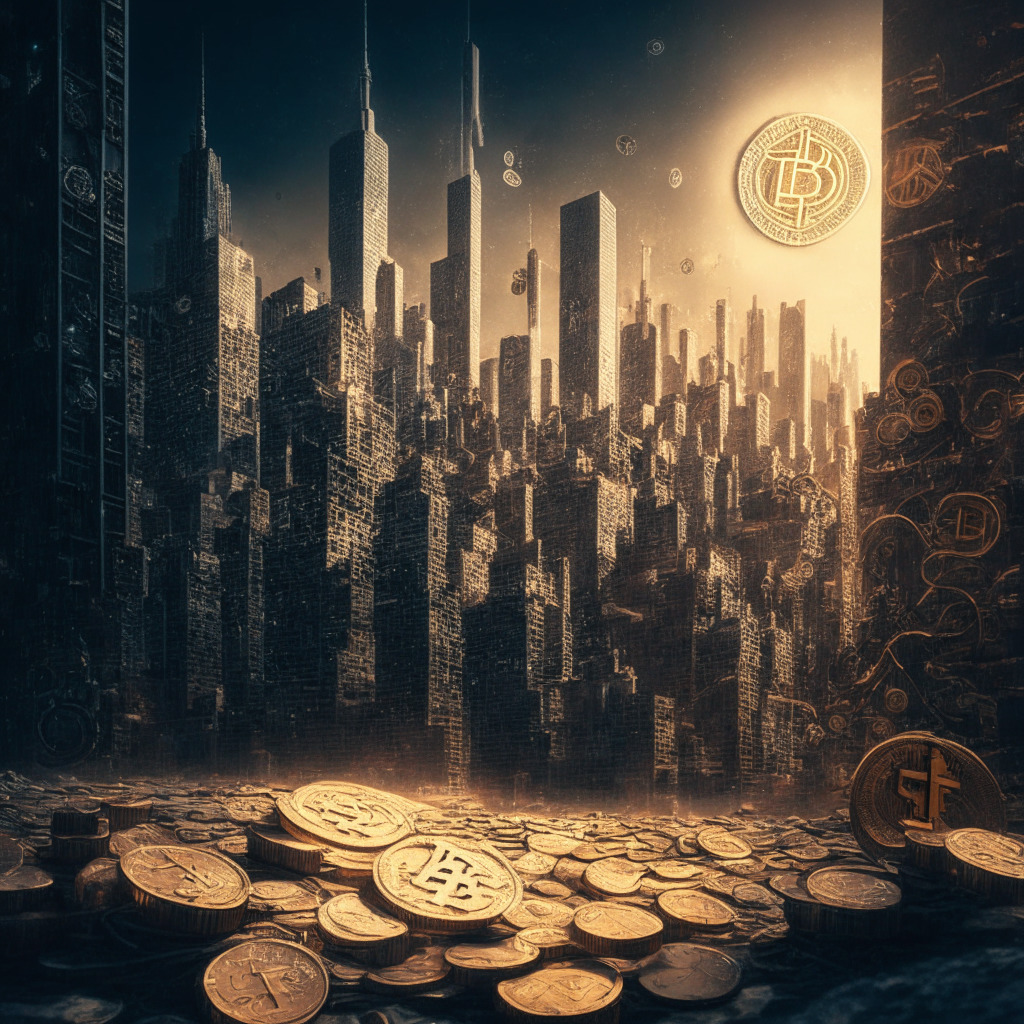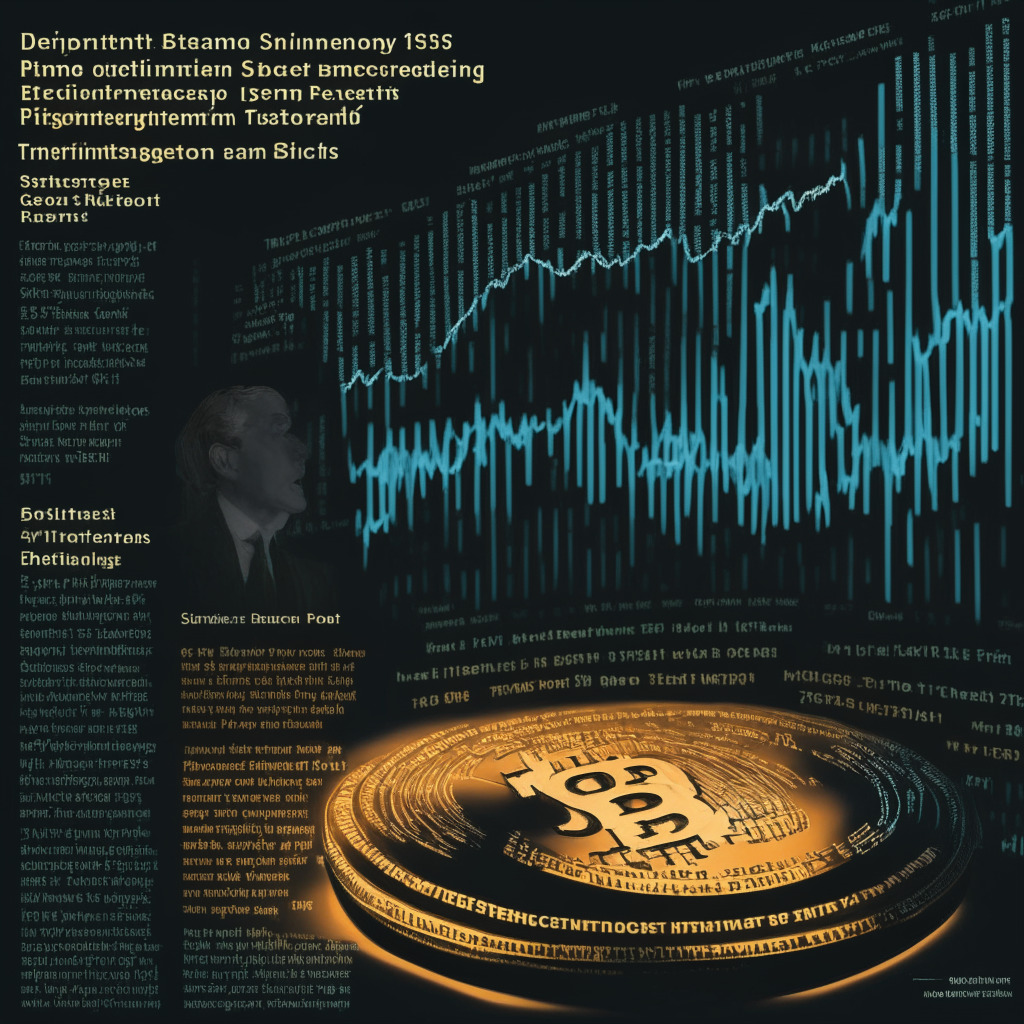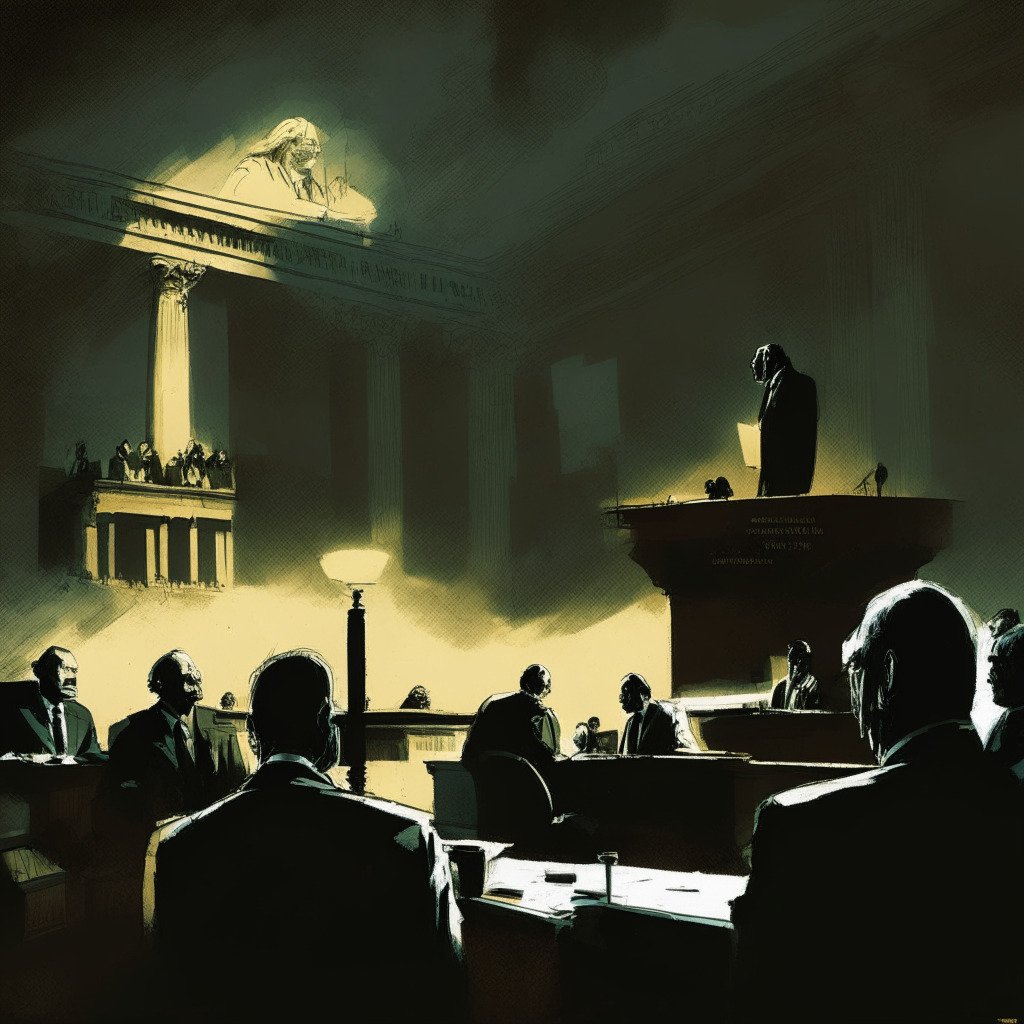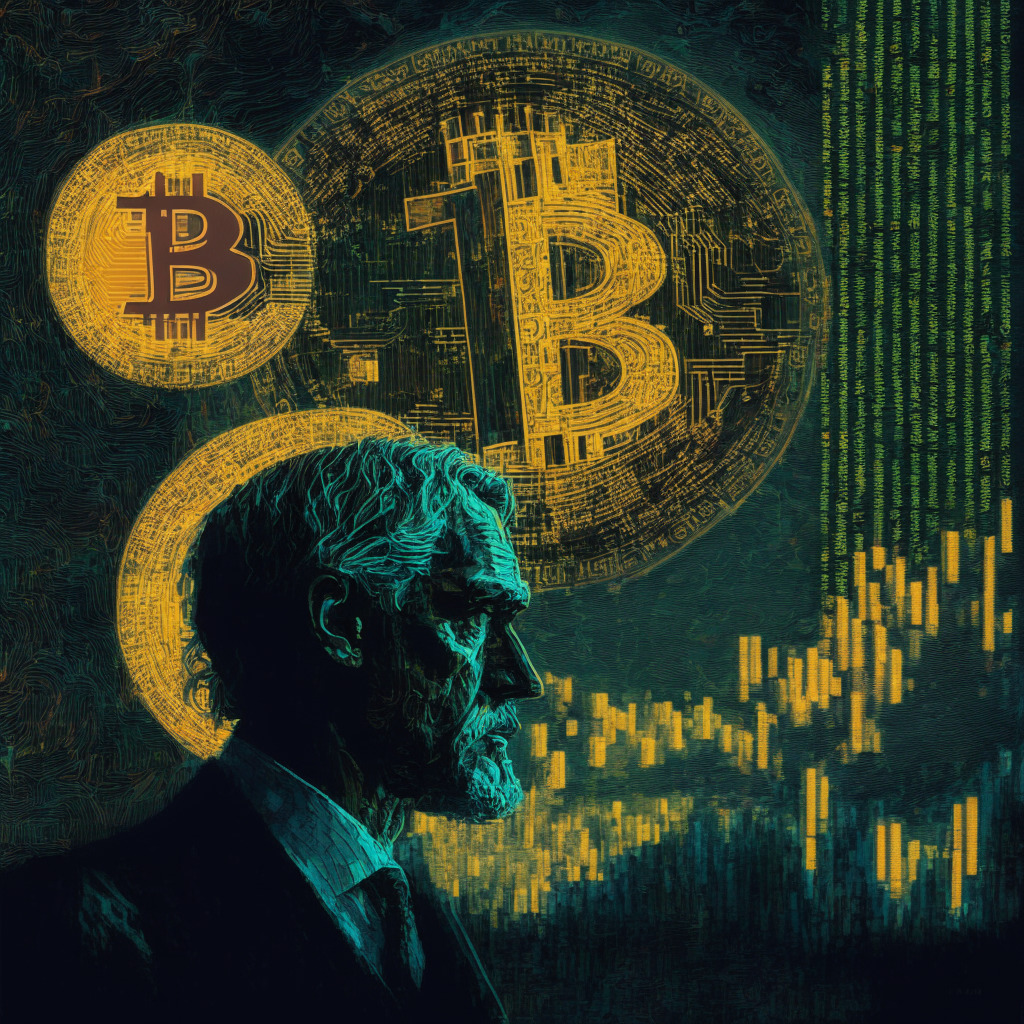The House Committee on Financial Services’ new Subcommittee on Digital Assets, Financial Technology, and Inclusion debated two proposed bills for stablecoin regulation, highlighting the need for a balance between state and federal control. The ongoing discussion emphasizes finding a suitable middle ground that fosters innovation and guarantees stakeholders’ best interests.
Search Results for: Reserve
Stablecoin Regulation Debate: US Lawmakers’ Divide and the Future of Digital Dollar
The US House Financial Services Committee’s digital assets panel debated on stablecoin regulations, highlighting divides between Republican and Democratic ideas. Both parties do align in addressing risks to consumers and maintaining the US dollar’s role in global commerce. Lawmakers are paying heightened attention to stablecoin regulations and wider crypto topics, marking progress in US oversight of the industry.
Miners’ Massive Transfers to Crypto Exchanges: Market Significance and Potential Impact
The global digital asset market has recently experienced an uptick, with Bitcoin surging almost 3%. However, recent data shows miners transferring 1,750 BTC ($48 million) to Binance, indicating possible incoming selling pressure. This raises questions about market stability and the potential influence of large players.
Unemployment Drops, Markets React: Crypto’s Growing Role in Economic Shifts
The recent decrease in weekly unemployment benefits and continuing claims has impacted U.S. stocks, with the Dow Jones Industrial Average falling and the cryptocurrency market experiencing a marginal decline. Stronger-than-expected jobless claims increase recession fears while the labor market remains highly competitive.
Bitcoin Struggles at $27,500: Tether’s Impact, Korea’s Regulations, and Pakistan’s Ban
Bitcoin struggles to overcome the $27,500 resistance level amid a downward trendline, while Tether plans to purchase Bitcoin to diversify its reserve holdings backing USDT. Meanwhile, Korean politicians unite for crypto regulations, and Pakistan enforces a ban on cryptocurrency services due to FATF requirements.
South Korea’s Urgent Crypto Bill: Balancing Investor Protection and Innovation
South Korea’s lawmakers are expediting the nation’s first standalone crypto bill, the Virtual Asset User Protection Bill, aiming to improve investor safety amid recent digital asset-related controversies. The comprehensive legislation consolidates 19 different crypto-related bills, providing clear legal definitions, outlining penalties, and mandating increased oversight and insurance for digital asset firms.
Bank Collapses Threaten Crypto: Pros and Cons of Direct Central Bank Access for EMT Issuers
This article discusses the risks associated with bank failures and the crypto market, highlighting the dependency of stablecoin issuers on banking partners for fiat settlement. It suggests granting e-money institutions direct access to central bank accounts, like in the UK and Lithuania, to increase safety, foster payment innovation, and reduce banking risks.
First eAUD Foreign Exchange Transaction: Future of CBDCs and Pros-Cons Debate
Australia successfully completed its first foreign exchange transaction using eAUD, marking a milestone in the country’s central bank digital currency (CBDC) development. The eAUD transaction showcased quicker settlement and potential benefits over traditional FX, remittance networks, and fiat currencies. The ongoing pilot explores various eAUD use-cases, driving the world closer to CBDC integration in financial systems.
Crypto Market Unfazed by Debt Ceiling, Stablecoins Diversify, and SEC’s Ripple Case Unveils Secrets
As the U.S. debt ceiling discussions continue, stablecoin issuers like Tether and Circle diversify their reserves amid dollar risks. Meanwhile, a federal judge ruled the SEC cannot seal documents related to ex-official William Hinman’s 2018 crypto speech, potentially revealing the reasoning behind ether not being considered a security.
Tether’s Bitcoin Investment Strategy and Emerging Crypto Projects: Navigating a Dynamic Market
Tether announces plans to allocate up to 15% of its reserves to invest in Bitcoin, citing its robustness and growing popularity. Meanwhile, innovative projects like AiDoge, Conflux, and ecoterra reflect the dynamic nature of the cryptocurrency market. Investors must stay vigilant and make informed decisions to capitalize on this growth.
Stablecoin Regulation Debate: Balancing Innovation, Dollar Dominance, and Securities Frameworks
The House Financial Services Committee’s Subcommittee is working towards regulating payment stablecoins, emphasizing the importance of dollar dominance and financial inclusion. While the SEC suggests regulating stablecoins through a securities framework, there is strong bipartisan consensus to treat them as cash instruments, with draft bills proposing prudential frameworks including capital requirements, redemption timeframes, and AML/KYC compliance.
U.S. States Battle Over CBDCs: Privacy Fears, Rising Tension, and a Divided Future
Florida recently banned central bank digital currencies (CBDCs), sparking interest from states such as Louisiana, Alabama, Texas, and North Dakota who also drafted opposition bills. Privacy concerns, government control, and individual freedom are key factors contributing to the contentious debate on CBDCs in the US.
Blockchain Battles Miami Housing Crisis: Captain Haiti’s $5M NFT-Real Estate Initiative
Captain Haiti Foundation partners with Dargent Group, raising $5 million to utilize blockchain technology to combat Miami’s housing crisis and preserve Haitian culture. The initiative focuses on helping Little Haiti residents acquire land and real estate, while limited edition NFTs facilitate unique real estate market opportunities.
Exploring High-Frequency Trading in Crypto: Opportunities, Strategies, and Regulation
The incorporation of high-frequency trading (HFT) in crypto markets has sparked both excitement and skepticism. Keone Hon, CEO of Monad Labs, discusses HFT’s potential challenges, strategies, and the need for sensible regulation in the crypto landscape. As crypto markets mature, opportunities for HFT may decrease, highlighting the importance of decentralized exchanges and clear regulatory frameworks for efficient operation.
Coinbase
Coinbase and Binance announce support for Sui (SUI) token, but list it under the “Experimental” category, implying skepticism about its stability. SUI’s future depends on its performance amidst established cryptocurrencies. Investors should conduct thorough research before considering this asset.
Stablecoin Regulation: Balancing Innovation and Consumer Protection in the US Market
California Rep. Maxine Waters has introduced a draft bill to regulate stablecoins in the United States, focusing on payment stablecoin issuers’ requirements, digital dollar research, and related subjects. Supporters say a clear regulatory framework would ensure oversight and consumer protection, while critics argue it could hinder innovation and limit the broader adoption of cryptocurrencies.
River’s $35M Funding: A Resurgence in Blockchain Interest or Risky Business Venture?
Bitcoin start-up River secures $35 million Series B funding led by Kingsway Capital, aiming to create a transparent and robust financial ecosystem. River offers Bitcoin services, including brokerage, custody, mining, and wallet services, and plans to prioritize security and infrastructural development.
Tether’s Bitcoin Investment Plans: Confidence in Growth or Transparency Issues?
Tether plans to allocate up to 15% of its net realized operating profits towards investing in Bitcoin, citing its resilience and growth potential. However, concerns over transparency and underlying assets backing stablecoins persist, with some critics questioning Tether’s $1.5 billion worth of Bitcoin reserves.
Ripple Acquires Metaco, Tether’s New Strategy, and the Latest in Crypto Markets and Regulations
Ripple acquires Swiss-based Metaco for $250 million, expanding enterprise offerings and accelerating Metaco’s growth. Tether announces 15% net realized operating profits to be allocated towards Bitcoin purchase for reserve diversification. Meanwhile, Coinbase expands services in Singapore and China issues guidelines for NFT treatment.
Tether’s 15% Bitcoin Investment: Pros, Cons, and Future of Stablecoin Regulation
Tether plans to invest 15% of its net profits in Bitcoin to strengthen and diversify its reserves, demonstrating the company’s confidence in the cryptocurrency market. As US lawmakers discuss potential stablecoin legislation, Tether’s bold move could potentially shape the future of the industry.
Reinstating UPI Access for Indian Crypto Exchanges: Pros, Cons, and the Central Conflict
India’s government and Reserve Bank of India (RBI) face proposals to reestablish Unified Payments Interface (UPI) access for crypto exchanges amidst unclear cryptocurrency acceptance. Restoring UPI access could improve transaction tracking and protect investors while balancing industry struggles and regulatory measures for security and compliance.
Tether’s Bold Bitcoin Investment Strategy: A Wise Choice or Risky Gamble?
Stablecoin issuer Tether plans to allocate up to 15% of realized earnings for Bitcoin acquisition, diversifying its reserves. Skepticism arises over Tether’s choice to self-custody its holdings. The company’s continued investments signal confidence in cryptocurrency’s success and growth, but self-custody concerns persist.
Fed Rate Hike Pause: Boon or Bane for Crypto Market? Exploring Expert Opinions and Impact
Speculations surround the US Federal Reserve’s possible pause of interest rate hikes in June 2023, with a 73% likelihood. While many view it as a market stabilizer, some experts argue the strong economy may warrant resumed rate hikes. Investors prepare for the crypto market’s reaction to upcoming Federal Reserve decisions.
SEC vs. Ripple: Judge’s Ruling Sheds Light on Crypto Regulation and Legal Precedents
District Judge Analisa Torres recently ruled that the SEC cannot seal documents related to former official William Hinman’s 2018 speech on cryptocurrency in the lawsuit against Ripple. The decision brings transparency to the legal battle and has significant implications for the cryptocurrency legal landscape, potentially setting a precedent for future cases.
Ripple’s Victory Over SEC Document Sealing: Balancing Transparency and Regulation in Crypto
The U.S. District Court recently denied the SEC’s motion to seal the controversial Hinman documents, emphasizing their status as “judicial documents” subject to public access. This decision impacted Ripple’s XRP price and raises questions about regulatory transparency and its effect on the crypto market.
Imitation Crypto Exchange Scam: How Millions Were Stolen, DeFi and Centralized Methods Exposed
Scammers have stolen millions of dollars in cryptocurrency by impersonating HitBTC exchange through a fake website (hitbt2c.lol). They trick users into depositing crypto into fraudulent wallets, which have allegedly accumulated over $15 million. Victims’ funds are directed to multiple blockchain addresses, with the scammers utilizing DeFi tools and centralized methods to cash out stolen crypto.
Bank Failures: Are Digital Assets the Culprits or Scapegoats? Debating Responsibility and Regulations
This excerpt raises questions about the impact of digital assets on traditional banking institutions and whether it’s fair to blame cryptocurrencies for bank failures. It emphasizes the importance of collaboration between stakeholders, regulators, and the banking sector to ensure a well-regulated environment fostering growth and stability in both traditional banking and cryptography sectors.
Litecoin’s Surge and Upcoming Halving: Can It Hit $1000 in 2023 or Is That Overly Optimistic?
Litecoin’s price has surged recently, fueled by technical buying and optimism for the upcoming halving event on 2nd August. Factors such as dovish Federal Reserve policy, increased interest in hard money alternatives, and Litecoin’s potential for everyday payments contribute to its positive outlook. Recent developments like LRC-20, Mastercard partnership, and the 2023 halving event bolster Litecoin’s prospects in the crypto bull market.
River Raises $35M: A Step Towards Bitcoin-Powered Equitable Economy or Risky Investment?
River raises $35 million in Series B funding, led by Kingsway Capital and supported by billionaire investor Peter Thiel. River offers Bitcoin-related services such as zero-fee dollar-cost averaging, mining, full-reserve custody, and a wallet supporting on-chain and Lightning Network transactions.
Crypto Shadow Banks: A Looming Crisis or Future Opportunity? Debating Regulation Pathways
Cryptocurrencies are disrupting the traditional financial sector, with “crypto shadow banks” like FTX, Celsius, and Voyager operating without regulation. As these banks become increasingly interconnected with the real economy, future runs could be potentially destructive. U.S. regulators face the critical decision of protecting these banks or the real economy.
Crypto Markets and the Looming US Recession: Surviving the Economic Storm
The potential for a US recession looms over crypto markets, impacting cash flow and real-world utility. Crypto’s survival will depend on the recession’s root cause, duration, and severity. Tokens with real-world impact are likely to be more resilient. Focus on profit margins and cash flow remains critical for startups and investors.
Surge and Uncertainty: Analyzing BTC’s Potential Amid US Debt Ceiling Crisis and Market Volatility
The surge of Bitcoin towards $27,000 has generated excitement among traders. Crypto Ed suggests potential targets including a CME gap between $26,500 and $26,800. The unfolding US debt ceiling crisis may impact Bitcoin, leading to increased volatility and decreased liquidity in the coming weeks.































